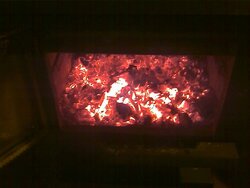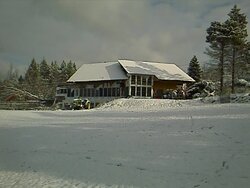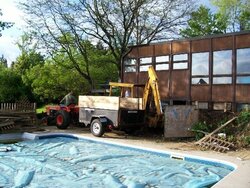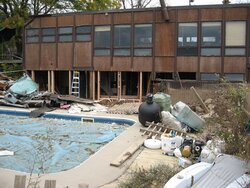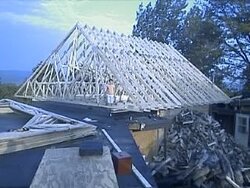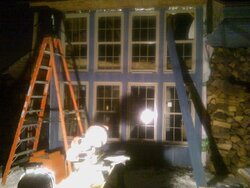SolarAndWood said:
I run 3+ with the blowers on constantly to keep everyone happy this time of year.
Last night, on a hot bed of coals, I loaded up the stove with 2 HUGE pieces of wood; 1 hard maple & 1 black cherry, and a smaller piece of black cherry. I ran the stove with the stat on 3.5 and the blowers on high. After 35 +/- minutes, the stovetop was at 775 and climbing (positioned on the right side of the cat probe near the flue collar), the factory supplied cat probe was at the 3:00 position, and the surface temp of the double wall connector pipe was 330 as measured by a magnetic Condar pipe thermometer.
I replaced the standard issue cat probe with a Condar probe (has numbers on it), the dial spun past the 3:00 position and exceeded 2000 degrees. There seems to be some deviation between the two probes, and probes themselves are slightly different lengths. I didn't leave the stat on 3.5; I don't know how hot the stove surface would/could get if I left it full open.
This is the first season with this stove, so the door gasket SHOULD NOT have deteriorated yet (doesn't mean it can't). The dollar bill test indicates the door is tight, as I cannot pull a bill through any part of the door with it shut and latched. Also, when the stat is turned down, the fire follows accordingly. A leaking door would continue to feed air, but mine doesn't; at least not enough to keep the flame active. Bypass door is also tight, with the extra click upon latching it. Chimney connector pipe was recently cleaned, a little fine powdery soot on the interior pipe surface.
Wood: Well seasoned, for 2 years outside, split and piled, facing southwest, and covered with roofing tin on top only. Hard maple, beech, oak, elm, very little cherry, ironwood, and apple once in a while. Moisture indicator consistently reads about 14% on the maple and oak, haven't checked the other types.
Chimney: 8" Double wall pipe connector straight up to the ceiling, then an all-fuel ceiling kit, then transitions back to double wall in the attic, two 45 degree elbows over the course of another 5' of vertical rise, and into an interior brick/tile lined chimney. I have good draft, but I don't have a draft reading to provide here.
Thoughts: My stove is the parlor model, it doesn't have the convection deck on the top of the stove. Perhaps the air delivered by the fan rises off the hot stove surface much faster on the parlor model, as it is not contained by a full length convection deck. The convection deck holds the air in the interstitial space for a much (relatively) longer period than the "open" stovetop parlor model, resulting in greater heat transfer from the stovetop to the forced air. If the stovetop runs cooler, the rate of heat transfer from the cat to the stovetop would be greater. Might this keep the cat temps on the convection deck models lower, all other things being somewhat equal?
Solar, I don't think I could run mine on a setting of 3(+) for a long time. I think it would get way too hot. Maybe it's the wood, draft, or combination thereof...
At any rate, I have doubts about the accuracy of the probe(s), but love the operation of the stove. I have an 1870 poorly insulated farmhouse less than an hour from Canada, and haven't used one drop of fuel oil yet this season. I went back to the factory supplied cat probe about a month ago, as it never spins up to quite as high a position as the Condar replacement; I guess that's just a mental thing for peace of mind.


